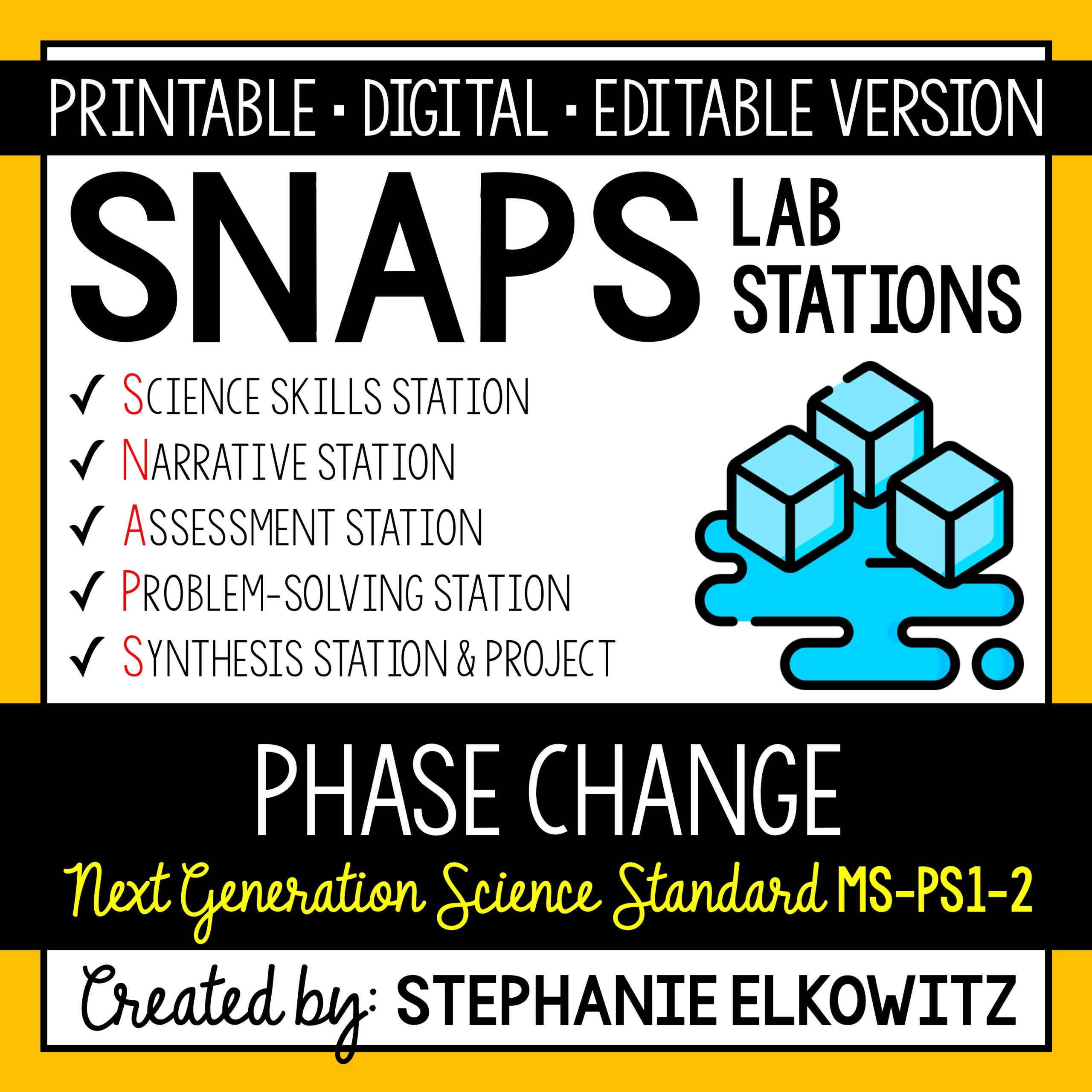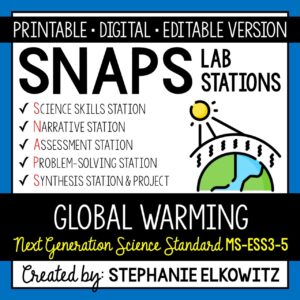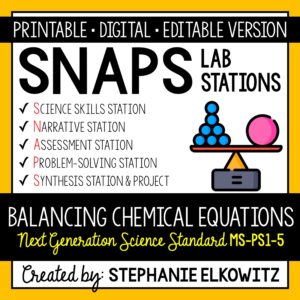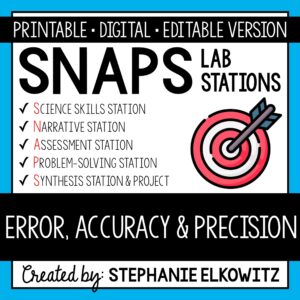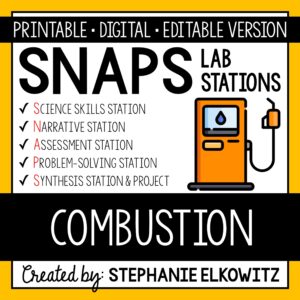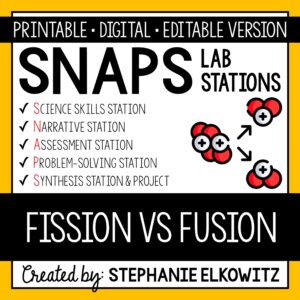5-PS1-3 Physical Properties of Matter Lab
$7.00
An engaging lab activity designed to enhance students’ understanding of quantitative and qualitative physical properties of matter. Aligned with NGSS 5-PS1-3.
Description
5-PS1-3 Physical Properties Lab Preview
SNAPs Lab Stations Activities require students to use science, math, literacy, problem-solving and engineering skills. They are designed to enhance students’ understanding of scientific concepts and help students apply scientific ideas to the real world. Each station activity promotes skills so to develop students into proficient and competent scientific thinkers.
SNAPs lab activities have five components:
• Science Skills Station to develop science skill proficiency
• Narrative Station to build science literacy
• Assessment Station to evaluate learning and understanding
• Problem-Solving Station to foster engineering design
• Synthesis Station and Project to inspire higher-order learning
DIGITAL LABORATORY – DISTANCE LEARNING & DIGITAL CLASSROOMS
• This lab is offered in a digital format to support digital classrooms & distance learning.
• The digital lab activity is designed to work with Google Slides and Microsoft PowerPoint
• The digital lab activity CANNOT be edited. However:
– Students can manipulate text boxes
– Students can create tables, graphs and diagrams
– Students can insert images and drawings
GOOGLE FORM ASSESSMENT STATION
• The assessment station is offered as a self-grading Google Form.
• Questions are all short answer and are 100% editable.
• Suggestions for use are included in the download.
DISTANCE LEARNING COMPATIBILITY
SNAPs lab activities are rated for their ease with distance – independent learning. Refer to the preview for more information about how well this laboratory works in a fully digital classroom and with distance learning.
EDITABLE DOCUMENTS
This download includes an editable word document (docx file) of all lab components:
• Pre-Lab and Post-Lab Activities
• The Lab Overview
• Lab Station Activities and Questions
• Directed Synthesis Project (when applicable)
Important Notes:
• Diagrams, illustrations, tables and graphs essential to lab activities are included
• Illustrative clipart is NOT included
• Editable documents and rubrics are included with the FREE SNAPs Setup Guide
Editable files allow you to:
• Edit the scope of the activities so to suit your students’ needs
• Edit the materials required based on resource availability
• Create single-period “mini-labs” using activities at the individual skills stations
The activities at each station in this lab are detailed below.
Physical Properties of Matter Lab Stations Activity Learning Objectives
1. Compare the chemical and physical properties of matter.
2. Categorize quantitative and qualitative properties of matter.
3. Describe the physical properties of a substance.
4. Identify an unknown substance based on its physical properties.
Science Skills Station
Students will study and categorize quantitative and qualitative physical properties of matter. They will also describe the physical properties of a solid and liquid substance. Students will make measurements such as mass and volume. They will make qualitative observations of the substances as well.
Narrative Station
At this station, students will read an informational text about the chemical and physical properties of matter and how they are important to identifying and describing substances. Students will also read about quantitative and qualitative (physical) properties of matter and the tools that help us determine these properties.
Assessment Station
At this station, students will answer questions about key terms and ideas relating to physical properties of matter. Students must employ lower, mid and higher order thinking skills to answer these questions.
Problem-Solving Station
At this station, students will identify three unknown substances. Students will make measurements and observations so to help them identify the properties of the substance. From this information, students will determine the material the substances are made of.
Synthesis Station
Students will compose a CER (claim-evidence-reasoning) report to summarize the lab. Students are provided the claim statement and must support the claim with observations, data and other information gathered in the lab. Students will explain how the evidence supports the claim using scientific reasoning.
Synthesis Project
Students will have a choice of 11 projects. Refer to the SNAPs Lab Stations Best Practices and Setup Guide for directions and suggestions on how to conduct the project.
This download includes:
• A pre-lab assignment and post-lab reflection
• Directions and questions for each lab station
• Student recording sheets
• Teacher Key
Additional Materials Required:
1 Scale
1 Graduated Cylinder
1 Ruler
1 Thermometer
2 Magnets
2 Magnifying Glasses
6 Beakers
Isopropyl Alcohol
Nickel-plated Key
Salt
Stainless steel nail or screw
Baking soda (sodium bicarbonate)
White vinegar (acetic acid)
NEXT GENERATION SCIENCE STANDARDS
This laboratory satisfies NGSS 5-PS1-3. It combines the three dimensions of science learning – science and engineering practices, disciplinary core ideas and crosscutting concepts – to meet the standard. This lab also makes interdisciplinary connections to STEM, Math CCSS and ELA CCSS to build the appropriate skills.
TERMS OF USE
• All rights reserved by Stephanie Elkowitz.
• This product is to be used by the original purchaser only.
• Intended for classroom and personal use only.
• Copying for more than one teacher, classroom, department, school, or school system is prohibited.
• This product may not be distributed or displayed digitally for public view.
• Failure to comply is a copyright infringement and a violation of the Digital Millennium Copyright Act (DMCA).

